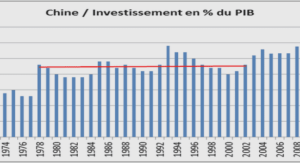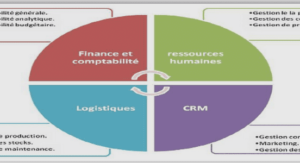Introducing Android
The mobile development community is at a tipping point. Mobile users demand more choice, more opportunities to customize their phones, and more functionality. Mobile operators want to provide value-added content to their subscribers in a manageable and lucrative way. Mobile developers want the freedom to develop the powerful mobile applications users demand with minimal roadblocks to success. Finally, handset manufacturers want a stable, secure, and affordable platform to power their devices. Up until now a single mobile platform has adequately addressed the needs of all the parties. Enter Android, which is a potential game-changer for the mobile development community.An innovative and open platform,Android is well positioned to address the growing needs of the mobile marketplace. This chapter explains what Android is, how and why it was developed, and where the platform fits in to the established mobile marketplace. A Brief History of Mobile Software Development To understand what makes Android so compelling, we must examine how mobile development has evolved and how Android differs from competing platforms. Way Back When Remember way back when a phone was just a phone? When we relied on fixed landlines? When we ran for the phone instead of pulling it out of our pocket? When we lost our friends at a crowded ballgame and waited around for hours hoping to reunite? When we forgot the grocery list (see Figure 1.1) and had to find a payphone or drive back home again? Those days are long gone.Today, commonplace problems such as these are easily solved with a one-button speed dial or a simple text message like “WRU?” or “20?” or “Milk and?” Our mobile phones keep us safe and connected. Now we roam around freely, relying on our phones not only to keep in touch with friends, family, and coworkers, but also to 8 Chapter 1 Introducing Android Consider the following true story, which has been slightly enhanced for effect: Once upon a time, on a warm summer evening, I was happily minding my own business cooking dinner in my new house in rural New Hampshire when a bat swooped over my head, scaring me to death. The first thing I did—while ducking—was to pull out my cell phone and send a text message to my husband, who was across the country at the time. I typed, “There’s a bat in the house!” My husband did not immediately respond (a divorce-worthy incident, I thought at the time), so I called my dad and asked him for suggestions on how to get rid of the bat. He just laughed. Figure 1.1 Mobile phones have become a crucial shopping accessory. tell us where to go, what to do, and how to do it. Even the most domestic of events seem to revolve around my mobile phone. A Brief History of Mobile Software Development 9 Annoyed, I snapped a picture of the bat with my phone and sent it to my husband and my blog, simultaneously guilt-tripping him and informing the world of my treacherous domestic wildlife encounter. Finally, I googled “get rid of a bat” and then I followed the helpful do-it-yourself instructions provided on the Web for people in my situation. I also learned that late August is when baby bats often leave the roost for the first time and learn to fly. Newly aware that I had a baby bat on my hands, I calmly got a broom and managed to herd the bat out of the house. Problem solved—and I did it all with the help of my trusty cell phone, the old LG VX9800. My point here? Mobile phones can solve just about anything—and we rely on them for everything these days. You notice that I used half a dozen different mobile applications over the course of this story. Each application was developed by a different company and had a different user interface. Some were well designed; others not so much. I paid for some of the applications, and others came on my phone. As a user, I found the experience functional, but not terribly inspiring.As a mobile developer, I wished for an opportunity to create a more seamless and powerful application that could handle all I’d done and more. I wanted to build a better bat trap, if you will. Before Android, mobile developers faced many roadblocks when it came to writing applications. Building the better application, the unique application, the competing application, the hybrid application, and incorporating many common tasks such as messaging and calling in a familiar way were often unrealistic goals. To understand why, let’s take a brief look at the history of mobile software development.
“The Brick”
The Motorola DynaTAC 8000X was the first commercially available cell phone. First marketed in 1983, it was 13 × 1.75 × 3.5 inches in dimension, weighed about 2.5 pounds, and allowed you to talk for a little more than half an hour. It retailed for $3,995, plus hefty monthly service fees and per-minute charges. We called it “The Brick,” and the nickname stuck for many of those early mobile phones we alternatively loved and hated.About the size of a brick, with a battery power just long enough for half a conversation, these early mobile handsets were mostly seen in the hands of traveling business execs, security personnel, and the wealthy. First-generation mobile phones were just too expensive.The service charges alone would bankrupt the average person, especially when roaming. Early mobile phones were not particularly full featured. (Although, even the Motorola DynaTAC, shown in Figure 1.2, had many of the buttons we’ve come to know well, such as the SEND, END, and CLR buttons.) These early phones did little more than make and receive calls and, if you were lucky, there was a simple contacts application that wasn’t impossible to use. # The first-generation mobile phones were designed and developed by the handset manufacturers. Competition was fierce and trade secrets were closely guarded. Manufacturers didn’t want to expose the internal workings of their handsets, so they usually developed the phone software in-house.As a developer, if you weren’t part of this inner circle, you had no opportunity to write applications for the phones. It was during this period that we saw the first “time-waster” games begin to appear. Nokia was famous for putting the 1970s video game Snake on some of its earliest monochrome phones. Other manufacturers followed suit, adding games such as Pong,Tetris, and Tic-Tac-Toe. These early phones were flawed, but they did something important—they changed the way people thought about communication.As mobile phone prices dropped, batteries improved, and reception areas grew, more and more people began carrying these handy devices. Soon mobile phones were more than just a novelty. Customers began pushing for more features and more games. But there was a problem. The handset manufacturers didn’t have the motivation or the resources to build every application users wanted.They needed some way to provide a portal for entertainment and information services without allowing direct access to the handset. What better way to provide these services than the Internet?




